GL Enhances MAP Protocol Emulator with Location Services
13th, Oct 2017
Welcome to another October 2017 issue of GL Communications' Newsletter providing information and insight into our enhanced Mobile Application Part (MAP) Protocol Emulator that now supports Location Services (LCS) as per 3GPP TS 23.271 specifications.
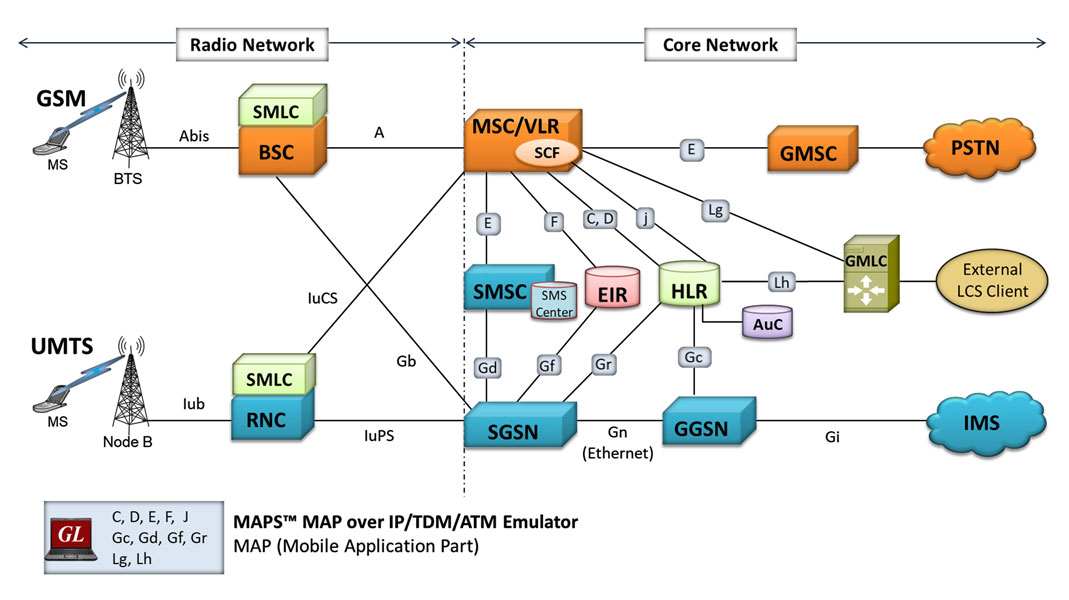
Overview
Accurate location services find its use in many public operations such as emergency services, vehicle tracking, stolen assets tracking, advertising, and social networking. Location based services provide information about the geographic location of Mobile Equipment (ME), which rely upon Location Service (LCS).
MAP network now includes Location Services (LCS) specific elements and entities, their functionalities, interfaces, as well as communication messages, necessary to implement the positioning functionality in a cellular network. LCS architecture follows a client/server model with the Gateway Mobile Location Center (GMLC) acting as the server providing information to External LCS Clients.
Primary facilities provided by MAP are “Mobility Services”, "Operation and Maintenance", "Call Routing and Roaming", "Subscription Information", "Short Message Service", “Packet Data Protocol (PDP) services for GPRS”, “Location Services”, “Supplementary Services” and many more.
The "Radio" and "Core" network partition is shown above in the main diagram for GSM and UMTS networks.
Traditionally SS7 is carried by TDM (T1 and E1) circuits, but recently with the popularity of the Internet and IP, a special IP protocol called SIGTRAN is rapidly gaining acceptance.
Elements and Interfaces that comprise the core network are briefly listed and described below:
| Interface | Elements | Purpose | TDM (T1 or E1) | IP |
|---|---|---|---|---|
| B | MSC-VLR | Generally, an internal interface within the MSC. Used whenever the MSC needs access to data regarding a MS located in its area. | ✔ | ✔ |
| C | MSC-HLR | MSC server interrogates the HLR for routing information of a subscriber for a call or SMS directed to that subscriber | ✔ | ✔ |
| D | VLR-HLR | Used to exchange data related to the current location of a mobile station and to the management of that subscriber | ✔ | ✔ |
| E | MSC-GMSC MSC-SMSC |
Exchange of handover data between two adjacent MSCs for the purpose of seamless call and message flow | ✔ | ✔ |
| F | MSC-EIR | Used by the EIR to verify the status of the IMEI retrieved from the Mobile Station | ✔ | ✔ |
| G | VLR-VLR | Used to update a new VLR with IMSI and authentication info from old VLR, when a mobile subscriber moves from one VLR area to another (not shown in the diagram) | ✔ | ✔ |
| H | HLR-AuC | HLR requests for authentication and ciphering data from the AuC for a Mobile Subscriber. | ✔ | ✔ |
| J | HLR-gsmSCF | All the Supplementary Services between HLR and gsmSCF | ✔ | ✔ |
| Gc | GGSN-HLR | Used by the GGSN to retrieve information about the location and supported services for a mobile subscriber for packet data services (GPRS, etc.) | ✔ | ✔ |
| Gr | SGSN-HLR | Used to exchange data related to the current location and management of a Mobile Subscriber (MS) and Mobile Equipment (ME) | ✔ | ✔ |
| Gf | SGSN-EIR | Used by the EIR to verify the status of the IMEI retrieved from the Mobile Station. | ✔ | ✔ |
| Gd | SGSN-SMSC | Used to transfer SMS over GPRS. | ✔ | ✔ |
| Lg | GMLC-MSC | EPC LCS Protocol (ELP) used on the Lg interface between the GMLC and the MSC This interface supports Location Service (LCS) functionality providing positioning of the UE |
✔ | ✔ |
| Lh | GMLC-HLR | Used in Location Services between the GMLC and the HLR to retrieve the routing information needed for routing a location service request to the servicing VMSC, SGSN, MME or 3GPP AAA server | ✔ | ✔ |
Functional Procedure
GL’s MAPS™ MAP IP signaling emulator is enhanced to simulate LCS procedures over Lg and Lh interfaces using MAP signaling protocol. Supported LCS procedures include Provide Subscriber Location, Subscriber Location Report, and Routing Info for LCS respectively, as per 3GPP TS 23.271 specifications.
The Lg and Lh interfaces enable LCS in the GPRS/UMTS to provide support for specialized mobile location services for operators, subscribers, and third-party service providers.
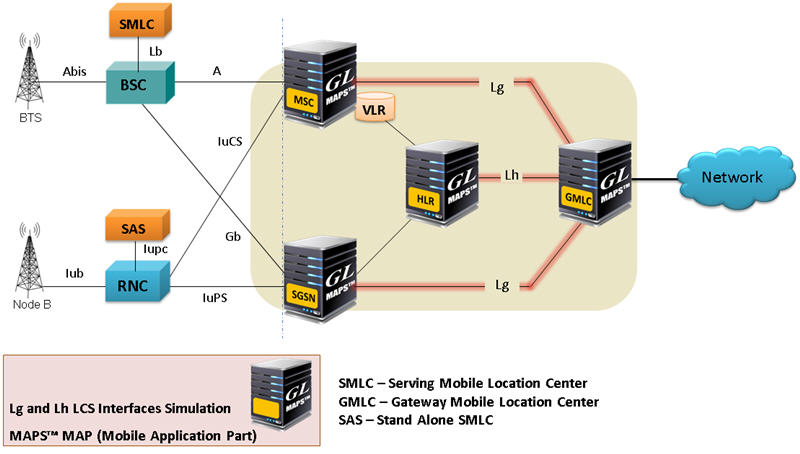
MS initiated Location Report Procedure is supported over Lg Interface between GMLC and MSC and Network Initiated Location Retrieval Procedure over Lh Interface between GMLC and HLR.
The Lg interface implements the following Mobile Application Services:
- MAP-Provide-Subscriber-Location
- MAP-Subscriber-Location-Report
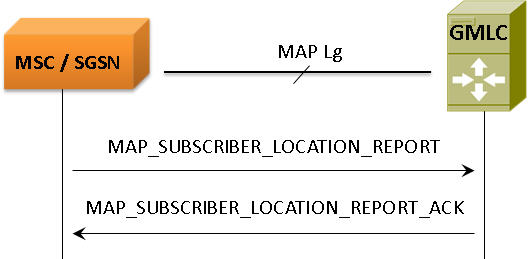
Lg Interface-LCS Procedure
The Lh interface implements the following Mobile Application Services:
- MAP-SEND-ROUTING-INFO-FOR-LCS, used to retrieve the routing information.
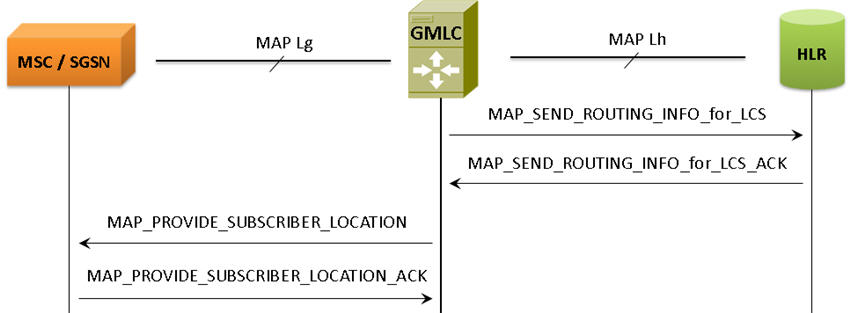
Network Initiated Location Retrieval Procedure
The above LCS procedures can be realized using MAPS™ MAP as depicted in the screenshot below:
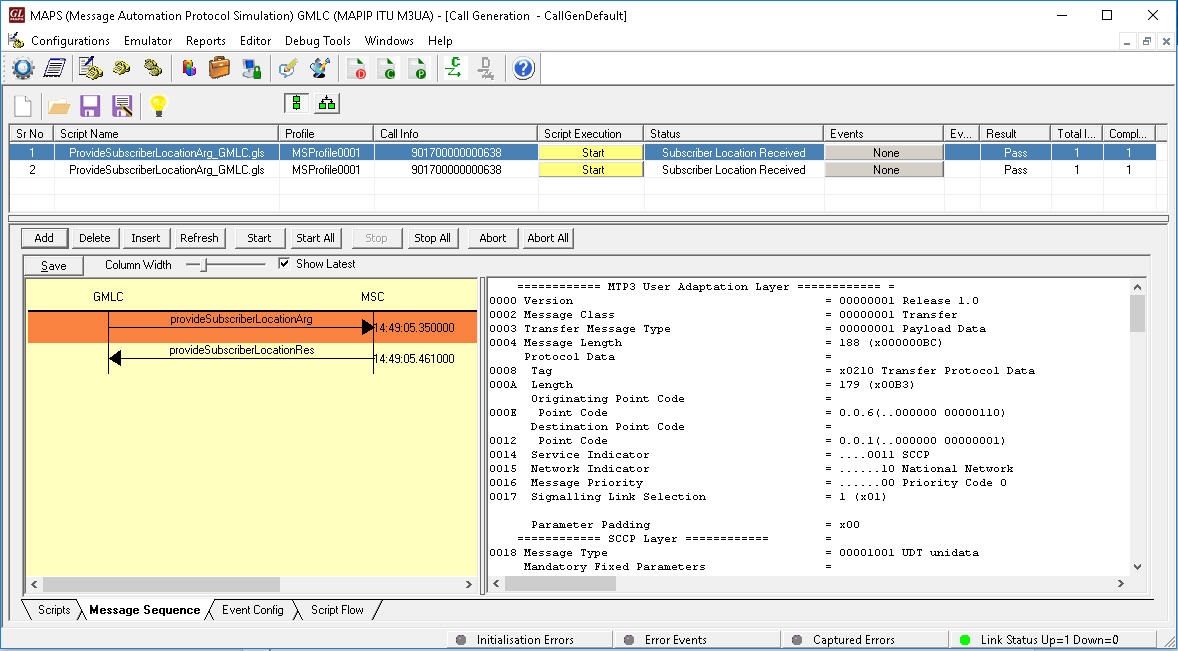
MAPS™ MAP IP (GMLC) Simulating Lg Interface Procedure
Other Supported MAP Protocol Services
Other MAP services supported using enhanced MAPS™ MAP protocol emulator can be segregated into the following main categories:
Mobility Management
MAPS™ MAP supports Mobility management procedures to facilitate mobile device operations in UMTS or GSM networks.
The service is used to trace physical user and subscriber locations to provide mobile phone services, like calls and SMS. Mobility management operations can be categorized as follows - Location management, Authentication, International Mobile Equipment Identities (IMEI), Subscriber Management, Identity Management, and Fault Recovery.
Short Message Service (SMS)
MAPS™ MAP has the ability to send/receive Short Messages over the network as if sent by thousands of mobile phones (Short Message Mobile Originated (SMS-MO)). MAPS™ can also transmit a Short Message to a mobile phone (Short Message Mobile Terminated (SMS-MT)).
Supplementary Services
Supplementary services are additional services that are provided in addition to teleservices and bearer services. MAP defines procedures to Register, Activate, Deactivate and Deletion of these services for a subscriber.
Unstructured Supplementary Services (USSs)
USSD Services can be MS or network initiated to give an unstructured supplementary service notification to the mobile user. USSD is session oriented and much faster than SMS services, which is particularly beneficial for interactive applications.
Important Features
- MAP protocol simulation over TDM (E1/T1) and IP
- Emulator can be configured as MSC (VLR), HLR, GMSC, EIR, AuC, SMSC, SGSN, GGSN, and GMLC entities and emulate the respective interfaces
- User-friendly GUI for configuring the MAP signaling links
- Access to all MTP3, SCCP, and MAP R4 protocol fields such as TMSI, IMSI, MCC, MNC, MSIN, CCBS and more
- Supports MAP MTP3 layer (over TDM) and M3UA, M2UA, M2PA layers (over IP) messages
- Supports Application context versions 2 and 3
- Ready scripts for monitoring other end, set reporting state for the requested service, report an event or call outcome, report remote subscriber status procedures
- Logging of all messages in real-time
- Provides protocol trace with full message decoding of the GSM/UMTS messages
- Automation, Remote access, and Schedulers to run tests 24/7
For comprehensive information on the application, user can refer to the MAP Protocol Emulator web page.
 Back to Newsletter Index Page
Back to Newsletter Index Page